Back about 18 months ago, I wrote about an area I saw on my walk which had been disturbed (dug up) when a roundabout had installed, requiring changing the layout of the guttering. The area had been left as bare dirt and over a series of months the most wonderful volunteer plant community had sprung up. The group contained 15 or more plant species, each one contributing something different to the mix. To me it was an awesome display of how nature recovers after being disturbed, and I was fascinated to walk past it most days.
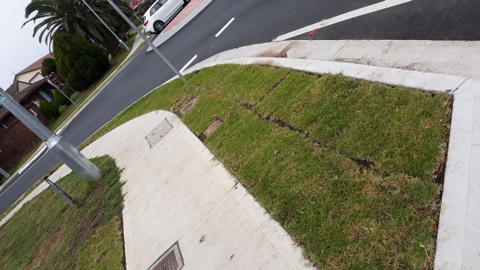
Unfortunately there was no happy ending. Within a couple of weeks of me taking pics and writing about it, the council returned, dug it all up and replaced the natural plant diversity that had sprung up with kikuyu turf! There is comment in there somewhere about modern life, but I will leave it alone!
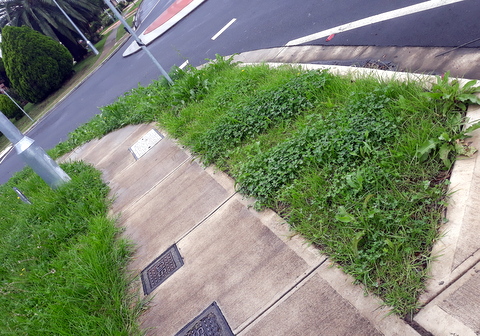
Anyway, after not having passed through that area due to changes in my walking route for 18 months or so, I happened along that route again and was pleased to note that nature had not taken the insult lying down!
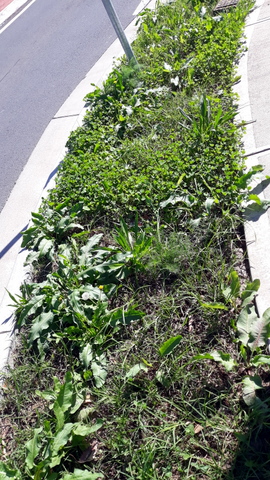
To be sure, Kikuyu is probably still the dominant species, but it is being given a very hard time by both dock and clover, and there have been a couple of new species introduced, although it has not quite as diverse as it was before the great kikuyu invasion of 2020!
Species I observed and their uses include –
Catsear (also known as flatweed) – (Hypochoeris sp.) – edible, roots used as coffee substitute, has a taproot which digs down into the soil to bring up deeper nutrients, also assists water draining down into soil rather than running off. Insectary flowers.
Chickweed – (Stellaria Media) – Edible, and regarded as medicinal, shallow fibrous roots which can keep the soil together during rain events.
Clover - (trifolium sp.) - edible by stock and people, has a taproot which digs down into the soil to bring up deeper nutrients, also assists water draining down into soil rather than running off, it is a nitrogen fixer and improves soil fertility. Insectary plant.
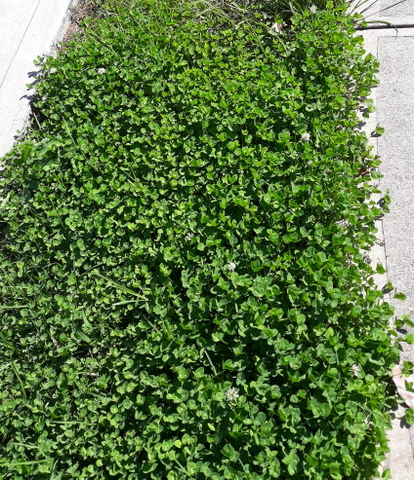
Creeping Mallow (Modiola caroliniana) – is not edible although birds have been observed eating the seeds. Has a taproot which digs down into the soil to bring up deeper nutrients, also assists water draining down into soil rather than running off
Dandelion – (taraxacum officionale) - edible by stock and people, has a taproot which digs down into the soil to bring up deeper nutrients, also assists water draining down into soil rather than running off. Insectary plant.
Dock – (rumex sp.) – Edible by stock and people, has a taproot which digs down into the soil to bring up deeper nutrients, also assists water draining down into soil rather than running off.
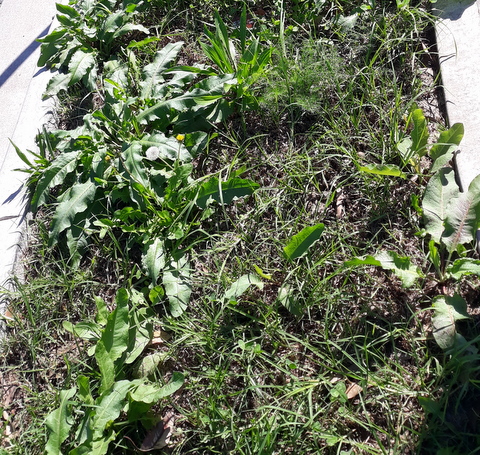
Fennel – (Foeniculum vulgare) – An aromatic plant, used in flavouring, the flowers are insectary and the seeds are an ingredient in curries. It may be considered to be medicinal. The root is edible but is much smaller and tougher than cultivated fennel
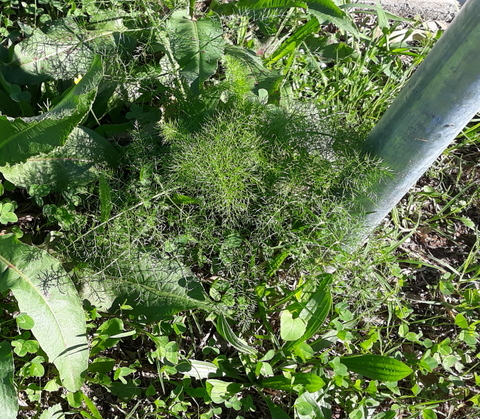
Kikuyu – (Pennisetum clandestinum) - edible by animals, has a deep root system holds the soil together to prevent erosion during rain events.
Paspalum - (Paspalum sp.) – edible by animals, its deep root system deep root system holds the soil together to prevent erosion during rain events. Birds have been known to eat the seeds (including corellas).
Prairie grass – (bromus wildenowie) – edible by animals, has a fibrous root system holds the soil together to prevent erosion during rain events.
Ribwort plantain – (plantago lanceolate) – edible (but very fibrous), with a fibrous root system holds the soil together to prevent erosion during rain events.
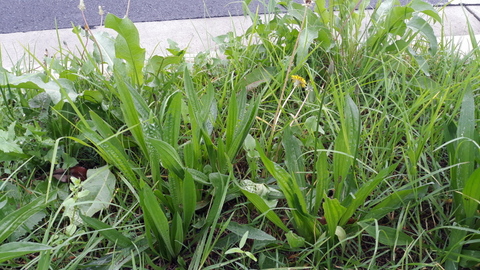
Sowthistle – (sonchus sp.) – edible, has a taproot which digs down into the soil to bring up deeper nutrients, also assists water draining down into soil rather than running off, insectary.
Yellow Wood Sorrel – (Oxalis stricta) – edible in small quantities, also regarded as medicinal, insectary, fibrous root system.
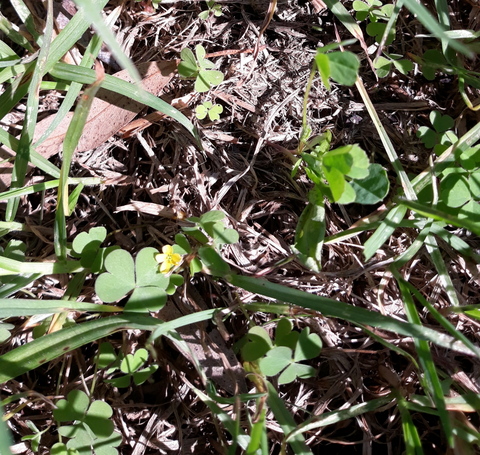
All these plants as well as some others, all gathered in a narrow sward, between a road and a footpath, all self-sown and with no care from humans at all. Astounding! In some of the permaculture related courses we teach we talk about asking the question – “what would nature do?” Clearly, THIS is what nature does.
It is interesting to see that over time the monoculture is slowly being subverted by useful and diverse species. As I mentioned last time, while this particular area is not very auspicious for food gathering due to its proximity to the road, it does show that given a chance, diversity and useful species will win in the end.
The original article can be found here



